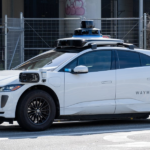Nokia isn’t only sitting on this asset; it is also working on incubating startups out of lab research. “If we are able to unleash two or three startups out of Bell Labs in a matter of two years that make a big impact, I would call this program a success,” said Nokia Chief Strategy and Technology Officer Nishant Batra.
With efforts like spinouts, Batra said, “the whole purpose is to take the technology out of Bell Labs to be able to offer to the world in different fields of uses or different industries—and at times, in both.” But for startups closer to home turf, there are other ways for Nokia to engage.
New Jersey is the historic home of Bell Labs and its global headquarters, but Nokia Bell Labs now operates research centers around the world, including key sites in Europe. With Nokia still headquartered in Finland, it is perhaps no surprise that, according to Batra, “there is an intent to build a similar studio in Europe.”
At the time, Nokia noted the exact scale of the program would depend on the evolution of end market demand. Two years on, the outlook is still unclear after U.S. President Donald Trump sparked turmoil in global markets with his tariff war.
But even after the cuts, Nokia expects to have between 72,000 and 77,000 staffers, and it is willing to lose some to the sirens of entrepreneurship. Two of its top researchers joined Astranu when it spun out, for instance; and with a budget in the order of $10 million a year, its incubation program also encourages internal employees to become entrepreneurs, Batra said.
It is too early to tell into how many startups all of these initiatives could result, and how many could succeed. But if this could become the new meaning of the Nokia effect, this would undoubtedly be a big win for a 160-year-old company that has repeatedly reinvented itself.









